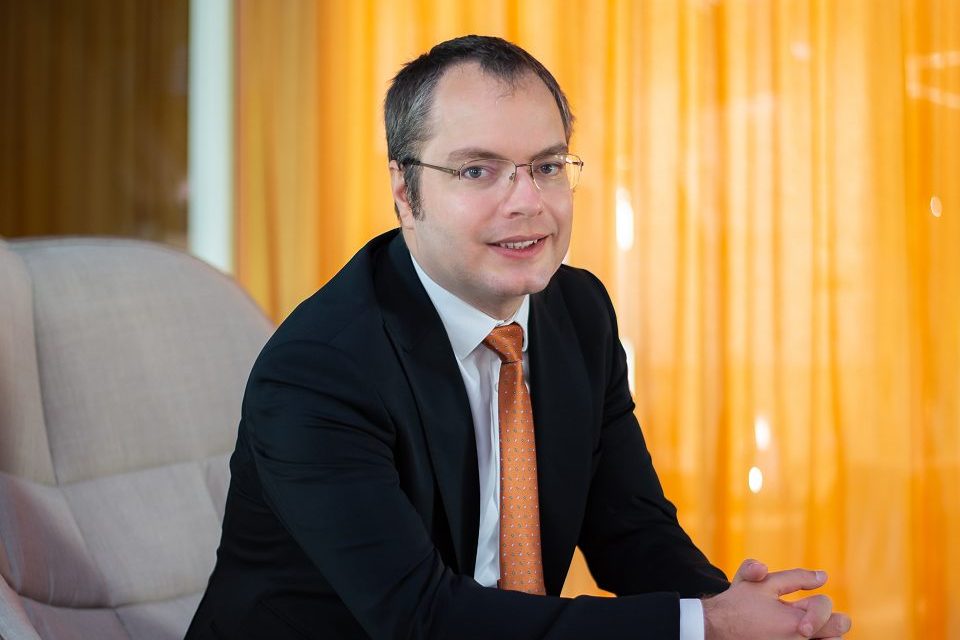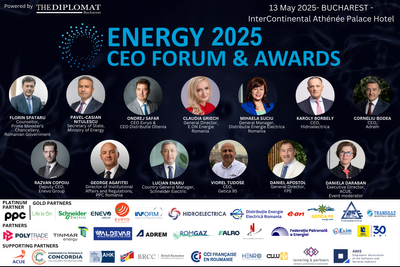Colliers: Top 10 predictions for the CEE-6 real estate market in 2024

Colliers expects a possible pickup in investment activity in the CEE region in the second half of the year if interest rates in the euro area start moving lower. Strategic relocation of industrial activities remains a growth opportunity for Romania and other CEE-6 countries
The Central and Eastern Europe (CEE) region, with the six major economies of Romania, Bulgaria, the Czech Republic, Hungary, Poland and Slovakia, will remain dynamic in 2024, with gross domestic product (GDP) growth in the region expected to triple to around 2.5%, up from less than 1% last year, Colliers consultants predict in the ”Top 10 predictions for CEE-6 in 2024” report. Retail parks remain a growth driver in the CEE region, but Colliers’ consultants see increased interest in larger shopping centers as well. Also, the limited supply of new office space will result in increasing occupancy rates, especially for modern and ESG compliant office spaces. Another important opportunity that Romania and nearby countries should take full advantage of is related to the re/near-shoring trend of Western companies from various parts of the world closer to “home” in order to diversify risks.
Although the GDP growth rate will vary considerably from country to country, all CEE-6 countries are expected to see positive growth and an acceleration in 2024. Silviu Pop, Director CEE & Romania Research at Colliers, attributes the expected GDP growth of around 2.5% to several factors. These include an improvement in the external situation, with the euro zone expected to recover, lower inflation and interest rates compared to peaks reached in 2022-2023, and solid investment spending. In addition, ”long-term forecasts are optimistic at least until 2028, when the International Monetary Fund’s forecast horizon ends. Thus, according to IMF data, if CEE-6 were considered as a single economy, it could become one of the 10 largest in the world by 2028”, the Colliers director points out.
Geopolitics will remain in the spotlight this year, with the CEE region gaining global relevance in the context of the war in Ukraine and the reshaping of China’s relationship with the West. Increased Western attention to the region means strengthening democracies and economic development in CEE. Poland and Romania, firmly anchored in Western influence, could benefit the most from changes in international relations among the CEE-6, given their distinct size and geographic location. Particularly important for the geopolitical balance are elections scheduled for this year, not only in some CEE countries, but also in major economies such as the US, India and the UK, Colliers’ consultants point out.
Western capital is going to be more present in countries that offer a stable environment to invest in, at a much lower cost than developed economies. The CEE region remains attractive for re/nearshoring operations by Western companies, given the wide gap between productivity levels and labor costs in all countries of the region. The relocation of operations to closer and friendlier countries, a trend that has already been discussed starting 2021 and 2022, has been a visible reality from 2023 onwards, as Colliers also points out in the recently published report “Highlights 2023 CEE-6 Real Estates Market“. All countries in the region are already seeing significant investment in the economy, which is well above the average of the previous cycle. In addition, the Czech Republic, Poland and Romania have all reached peak levels of gross investment in 2023. This points to a positive medium-term development, as investment now will lead to employment, wage increases and rising purchasing power, and some of the positive effects should be visible this year.
Lower inflation rates and a better economic outlook will also be on the agenda for many developers and private investors looking to expand in CEE. Compared to Western Europe, CEE has lower and in some regions, insufficient coverage of modern retail systems, so it is not a question of “if” but rather “when” these gaps will be covered. Retail parks remain a key element in the growth of the CEE real estate market, as they can be built at lower costs for developers and also target smaller cities. At the same time, Colliers consultants see growing interest in large-scale mixed-use or upscale projects. On the demand side, lower inflation should help the consumer in Eastern Europe, but there are still good prospects for discounters.
In the area of real estate transactions, even if an expected decline in interest rates by the major central banks is expected, loans will remain significantly more expensive for many years to come than they did in 2020-2022. There is also the issue of capital values, which have been steadily declining over the past year and a half, as a result of which many investors are waiting for a better opportunity to buy, while sellers prefer to hold on to their assets if possible. Accordingly, the Colliers consultants expect a continuation of the weak investment phase in the CEE region at least in the first half of 2024. In the second half of the year, however, a tentative revival is possible, as interest rates in the euro area and the US will start to fall from the second quarter of the year and economic activity will remain at a decent level. The recovery in investment activity may also be supported by asset sales that have come to the market in the context of a difficult loan refinancing.
2024 will also see a significant drop in new office deliveries. In the capitals of Slovakia and Romania, for example, almost no major projects are expected to be delivered this year. For the time being, the market remains tenant-dominated, with vacancy rates in the double-digit range in the CEE capitals, with the exception of the Czech capital. On the positive side, the slowdown in new construction will facilitate the absorption of vacant spaces, especially in modern, ESG-compliant offices. This trend could gradually tip the balance towards a neutral market by the end of 2024.
In the industrial and logistics sector, Colliers specialists expect rents in the CEE region to stabilize or at least increase at a slower pace as construction costs normalize and vacancy rates began to rise in some cases from 2022 or 2023. Recent years have seen an unprecedented rise in rents, which has affected the overall attractiveness of the region. However, given the significant differences in wages and labor productivity compared to Western Europe, CEE remains a viable alternative.
Green and efficient buildings are in focus for tenants, landlords and investors in all CEE countries, and these ratings are much more than just a tick-box criterion for companies and investors in reports to shareholders. The gap between older buildings and modern, efficient ones is becoming increasingly apparent in a variety of ways, from rent levels to tenant appeal, from occupancy rates to property values. Colliers experts see this as a key driver in making the modernization of older buildings a viable option. It should be noted that this trend comes at a challenging time, given the elevated interest rates. On the other hand, the importance of green criteria has also increased when it comes to financing, as banks assess not only the value of the building itself, but also how efficient and resilient it will be in the future.
Digitization and the transition to a green economy are not only opportunities, but also key factors that will influence the evolution of the real estate sector in innovative and sustainable directions. While much of the discussion about artificial intelligence (AI) has focused on the potential of machine learning, it is clear that we are now moving towards practical applications. Aspects such as multimodal AI, which could significantly improve productivity, are becoming a reality, while smart office solutions that facilitate the relationship between tenants and landlords are in full swing. All of these aspects should support the existing hybrid work regime in the office market. However, Colliers consultants believe that fears of the demise of the office working model are greatly exaggerated, as most companies still need face-to-face interaction with their employees, not only in the CEE region, but globally.
The residential sector in the region is faced with very different situations from one country to another. The affordability of new apartments can range from relatively reasonable prices in cities such as Bucharest and Sofia to prices in the highly overpriced/bubble area in Prague and Bratislava. Although a decrease in interest rates should stimulate the market in a positive direction for buyers, the development of the market is largely dependent on various regulatory issues and legislative blockages, in particular the slow pace of the approval process, so Colliers specialists do not expect any significant changes or improvements in the near future.
At the CEE level, the real estate market in the past year was characterized by dynamism in the industrial space segment and a return of demand for warehouses to pre-pandemic levels, an increased trend towards the opening of large shopping centers, as well as renovations, upgrades and M&A in the retail sector, according to the “Highlights 2023 CEE-6 Real Estates Market” report recently published by Colliers.
Another positive theme of the past year mentioned in the Colliers report is a significant improvement in the construction market, fueled by falling construction costs and, therefore, an increased availability of developers for new investments. The report also highlights the importance of ESG (Environmental, Social, Governance) criteria and the shift from a “nice-to-have” to a market standard across all real estate sectors.
Colliers’ report for last year also noted that changes in the way we work have led to increased demand for flexible workspaces and smart office solutions, and that digital technologies are making these types of spaces easier to manage and access, reinforcing the agile office model that allows for rapid adaptation to market changes or client needs.













